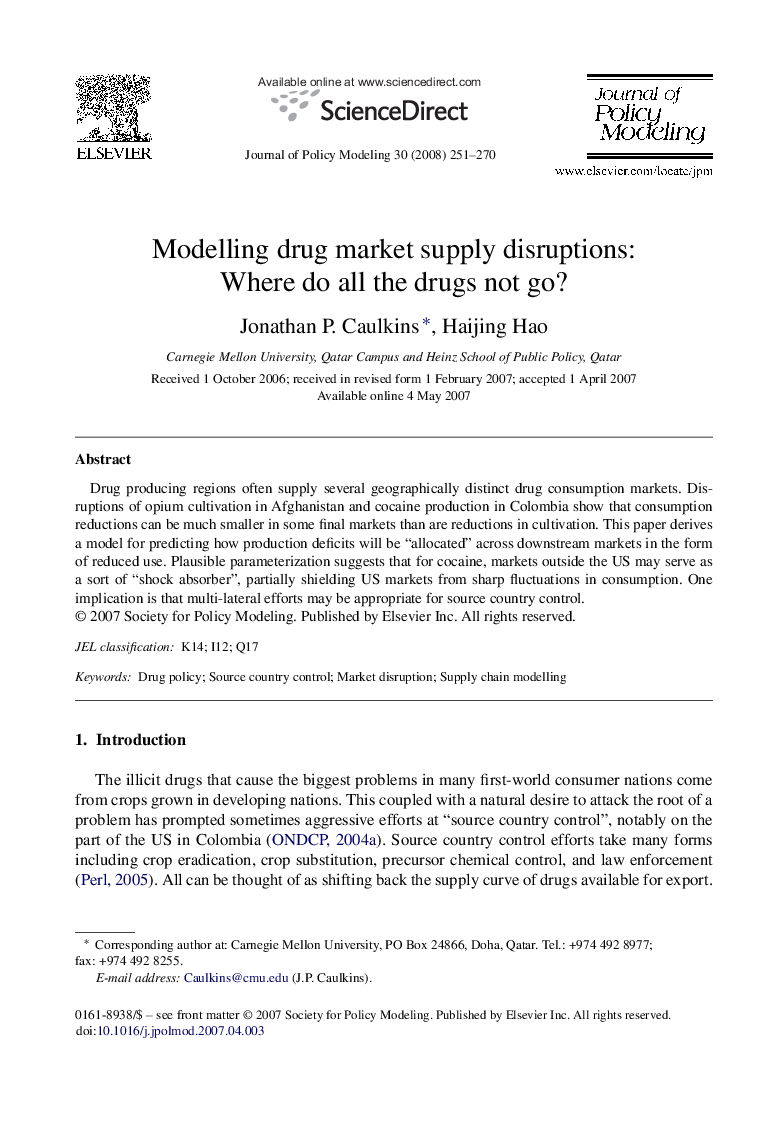| Article ID | Journal | Published Year | Pages | File Type |
|---|---|---|---|---|
| 968860 | Journal of Policy Modeling | 2008 | 20 Pages |
Abstract
Drug producing regions often supply several geographically distinct drug consumption markets. Disruptions of opium cultivation in Afghanistan and cocaine production in Colombia show that consumption reductions can be much smaller in some final markets than are reductions in cultivation. This paper derives a model for predicting how production deficits will be “allocated” across downstream markets in the form of reduced use. Plausible parameterization suggests that for cocaine, markets outside the US may serve as a sort of “shock absorber”, partially shielding US markets from sharp fluctuations in consumption. One implication is that multi-lateral efforts may be appropriate for source country control.
Related Topics
Social Sciences and Humanities
Economics, Econometrics and Finance
Economics and Econometrics
Authors
Jonathan P. Caulkins, Haijing Hao,
